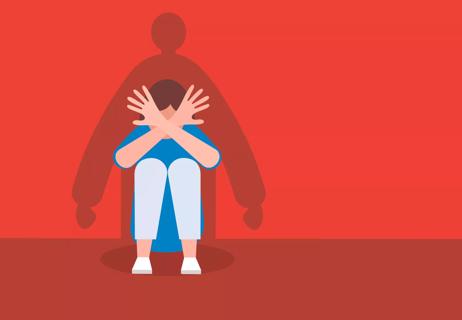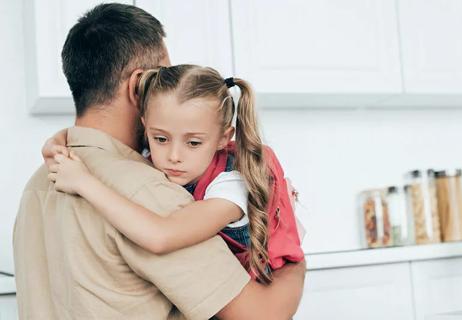Vomiting and fevers are a hard no — other symptoms are a judgment call

Lunches are packed. Breakfast is on the table. You’re feeling like you’ve got it all together. And then, your kid wakes up looking kind of … iffy. A little drippy, a bit extra tired, just a touch … off.
Advertisement
Cleveland Clinic is a non-profit academic medical center. Advertising on our site helps support our mission. We do not endorse non-Cleveland Clinic products or services. Policy
And you wonder, where’s the line? Should they stay home sick from school today?
On one hand, missing school might mean your child will fall behind and have to play catch-up. Plus, someone’s got to stay home with them. Maybe they just need a little time to shake off the morning groggies. Maybe it’ll clear up.
On the other hand, if you send your child to school sick, they may not be able to keep up. And then, you’ll have to do that walk of shame into the school nurse’s office — wracked with parental guilt for sending a sick kid to school and exposing the rest of the class to their illness.
With so many factors in play, how can you know you’re making the right call?
“Let your child’s symptoms be your guide,” says pediatrician Joanna Buckingham, MD. “Keep your child home from school if symptoms keep them from concentrating or participating in class.”
Uncertain about which symptoms should sideline your child? And how do you know they’re ready to go back to class? Here’s Dr. Buckingham’s advice on judging five common symptoms.
In school-aged children, a temperature of 100.4 degrees Fahrenheit (38 degrees Celsius) or higher is considered a fever. It’s one of the most clear-cut signs their body is fighting an illness.
Advertisement
Fever often accompanies a contagious illness, so kids with fevers should stay home from school. They’re probably not in good enough health to keep up with the demands of a school day, and they’re very likely to pass their germs on to others in their classroom. (And to you and the rest of your household, so make sure you’re all taking steps to keep healthy, like washing your hands often!)
Encourage them to rest and stay hydrated. They may also benefit from cool compresses and fever-reducing medication, like children’s acetaminophen (Tylenol®).
Kids should stay home from school until they’re fever-free for at least 24 hours, without use of fever-reducing medication. Get in touch with your child’s healthcare provider, like a pediatrician, if:
Some kids are more prone to tummy issues than others. Sometimes, it’s a “one-and-done” kind of thing and they’ll perk back up fast. And sometimes, it’s a sign that they’re fighting off an illness.
Either way, a kid who throws up should stay home from school and be monitored at home until they’re keeping food and drinks down for 24 hours.
Introduce food and drink slowly after a bout of vomiting. Start with the BRAT diet (bananas, rice, applesauce and toast), which is easy on the belly. Encourage your child to sip drinks slowly at first to make sure they don’t make their nausea worse. Try small amounts of sports drinks to keep up their electrolytes and prevent dehydration if keeping down food or drink is difficult.
See their healthcare provider if their vomiting lasts more than 24 hours, is accompanied by fever or if your child shows signs of dehydration.
If your child has diarrhea, the decision to keep them home from school depends on how severe the problem is.
Frequent bathroom trips or any accidents should be a sign that your child should stay home from school until their symptoms clear up.
On the other hand, one runny poo doesn’t necessarily mean they need to stay home.
“One episode of diarrhea might just be because something your child ate didn’t agree with them,” Dr. Buckingham says. “But if it’s turning into multiple episodes, or it’s paired with vomiting or fever that would be more of a reason to think about keeping them at home.”
When your kiddo is having the runs, keep the menu bland, and encourage them to drink often to avoid dehydration.
Advertisement
Coughing, sneezing, runny noses and congestion are common in kids, especially during cold and flu season. And not all colds and cold-like yuck should be treated the same.
“There’s a real spectrum of cold symptoms that kids can experience, and they probably don’t have to stay home for all of it,” Dr. Buckingham shares.
Mild cough and cold symptoms don’t necessarily mean your child needs a day off school.
But if they’re piling up the used tissues, coughing severely, wheezing or running a fever, a day or two to rest might be in order.
Encourage your child to wash their hands often and cover their mouth with their elbow while coughing or sneezing to help keep germs from spreading.
Assessing a sore throat depends on what’s causing it.
It’s probably fine to send your child to school if the cause is allergies or a mild cold, Dr. Buckingham notes.
But if you suspect their sore throat is something more, like strep, it’s time to stay home from school and call a healthcare provider. Strep throat tends to come on suddenly and is often accompanied by a fever, stomachache or headache. Strep doesn’t usually cause cold-like symptoms, like a cough or runny nose.
Strep throat is a bacterial infection. A healthcare provider can do a strep test and will likely recommend an antibiotic if the test is positive. If your child does have strep, they’ll have to stay home until 24 hours after starting an antibiotic.
Advertisement
You know your child best. If you suspect they won’t be able to comfortably make it through their school day, a day off is probably in order.
Advertisement
Learn more about our editorial process.
Advertisement

Requesting information about your school’s safety plan is so important

Ideas for keeping children engaged when school is happening at home

Movement is also an important part of their school day

Because perfect isn’t possible during a pandemic

How to best handle classroom conflict

Start slowly with clear fluids, and then move to bland, easy-to-digest foods

Throwing up is typically from a stomach bug, but it can also be a sign of other digestive issues

Awareness and prompt treatment can help keep your family safe

Type 2 diabetes isn’t inevitable with these dietary changes

Applying a hot or cold compress can help with pain